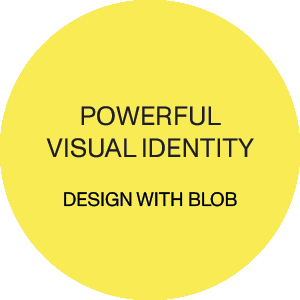Powerful visual identity is a cohesive and distinctive representation of a brand through elements like logos, colors and design.
It creates a strong and memorable impression, fostering brand recognition and conveying the essence and values of the organization.
Powerful visual identity enhances brand trust and leaves a lasting impact on the audience.
Personalized Progress Disclaimer. Embarking on a journey to enhance your professional presence can feel like a significant undertaking. We want to assure you that our approach is tailored to your pace, ensuring a smooth and comfortable experience. Our collaborative process begins with an exploration of your goals, and together, we navigate the learning curve at a speed that suits you. Your progress is the compass, and we are here to guide you, ensuring a relaxed and uplifting journey. You can trust that every step is orchestrated to align with your comfort, ensuring a positive and manageable path towards achieving your business aspirations.

By taking a strategic and collaborative approach, we can guide the design process and contribute to the development of a powerful visual identity that effectively communicates the essence of the individual or organization:
- Brand Discovery and Research: conducting thorough research and brand discovery sessions to understand the individual or organization’s values, mission, target audience and unique selling points. This information serves as the foundation for the visual identity
- Competitor Analysis: analyzing competitors and similar entities to identify visual trends, differentiators and opportunities for standing out in the market
- Define Brand Elements: collaborating on defining key brand elements, including the logo, color palette, typography, imagery style and other visual components. These elements should align with the brand’s personality and messaging
- Logo Design: developing a distinctive and memorable logo that encapsulates the essence of the brand. This may involve creating multiple iterations for review and feedback
- Color Palette Selection: assisting in choosing a cohesive color palette that resonates with the brand and evokes the desired emotions. Considering the psychological impact of colors on the target audience
- Typography Guidelines: defining typography guidelines, specifying fonts for various use cases (e.g., headings, body text) to maintaining consistency across all brand communications
- Imagery Style: establishing guidelines for the style of imagery used in brand materials, whether it’s photography, illustrations or other visual elements. Consistency in imagery enhances brand recognition
- Design System Development: creating a comprehensive design system that outlines the rules and specifications for using brand elements consistently across different platforms and mediums
- Mockups and Prototypes: providing mockups and prototypes to visualize how the visual identity will appear in various contexts, such as business cards, stationery, websites and marketing materials
- Brand Applications: exploring how the visual identity will be applied across different touchpoints, including digital and print materials, social media profiles, merchandise and any other relevant platforms
- Accessibility Considerations: ensuring that the visual identity is accessible, considering factors like color contrast, readability and usability for individuals with disabilities
- Guidelines Document: creating a comprehensive brand guidelines document – brand book, that serves as a reference for internal and external stakeholders. This document should cover proper logo usage, color codes, typography, spacing and other brand rules
- Iterative Design Process: engaging in an iterative design process, seeking feedback at various stages to refine and enhance the visual identity based on input from the individual or organization
- Collaboration and Approval: facilitating collaborative discussions and approval processes to ensure that the final visual identity aligns with the vision and goals of the individual or organization
- Implementation Support: offering support during the implementation phase, assisting with the rollout of the visual identity across different platforms and materials
- Continued Monitoring and Evolution: monitoring the reception and effectiveness of the visual identity over time and be prepared to suggest refinements or updates as the brand evolves

Pricing. Our pricing structure is designed with modularity in mind, ensuring that you only pay for the services you require, allowing for flexibility and customization. For each task you may decide to delegate to us there is a prewritten full-service list. This list consists of basic must do services, extent of available optional added services and suggestion of optional added third party services. During our task related Initial Chat, in a direct conversation with the client, we choose a customized list of services as per clients’ needs and circumstances. To accommodate different difficulty levels, we introduce an index for difficulty. The basic price is multiplied by this index to calculate the price for a task at any difficulty level, ensuring a fair and flexible pricing model that accurately reflects the complexity of the services provided. The level is argumented and agreed upon during the task related Initial Chat. With these inputs we then prepare and deliver to client our exact offer. For client’s information and potential budget range idea we have provided, for each task, a task price list as .pdf file with relevant details disclosed.

